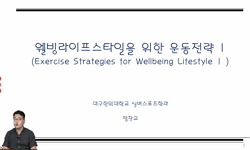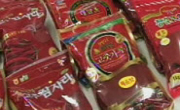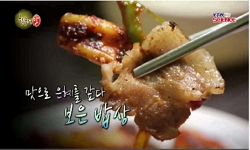This paper conducts a comparative analysis on the popular entertainment programs on food in Korea and France, in order to understand the social communication of two countries` Food Culture mediated by television. Analysis is focused on the formal diff...
http://chineseinput.net/에서 pinyin(병음)방식으로 중국어를 변환할 수 있습니다.
변환된 중국어를 복사하여 사용하시면 됩니다.
- 中文 을 입력하시려면 zhongwen을 입력하시고 space를누르시면됩니다.
- 北京 을 입력하시려면 beijing을 입력하시고 space를 누르시면 됩니다.

텔레비전의 예능 프로그램에 드러난 음식문화 비교연구 = Food culture as Televised Real Variety Program: A Comparative Study
한글로보기https://www.riss.kr/link?id=A101802241
- 저자
- 발행기관
- 학술지명
- 권호사항
-
발행연도
2015
-
작성언어
-
-
주제어
음식문화 ; 예능 프로그램 ; 리얼리티 프로그램 ; 매개 ; 맛 ; 취향 ; < 냉장고를 부탁해 > ; 라이프 스타일 ; 미디어문화 ; Food Culture ; Real Variety Program ; Reality Program ; Mediation ; Savor ; Taste ; Lifestyle ; Mediaculture
-
KDC
800
-
등재정보
KCI등재
-
자료형태
학술저널
- 발행기관 URL
-
수록면
131-162(32쪽)
-
KCI 피인용횟수
3
- DOI식별코드
- 제공처
-
0
상세조회 -
0
다운로드
부가정보
다국어 초록 (Multilingual Abstract)
This paper conducts a comparative analysis on the popular entertainment programs on food in Korea and France, in order to understand the social communication of two countries` Food Culture mediated by television. Analysis is focused on the formal difference between Reality Program and Real Variety Show, the first having the public participants and the second inviting celebrities ; on the principle of competition of each program that implemented a social dimension on the “eating”, a sensuous experience ; on the way that it is mediated by the different entertainment programs. Korean mediaculture provides many “eating” related programs and food is often object of a nostalgy. Compared to the French < Almost Perfect Diner(Diner Presque Parfait) > doing competion according to the collective and interdependent appreciation, Korean television`s < Take care of your refrigerator > shows real time cooking competition and the invited celebrities choose the winner chef according to their preference of cuisine. This program differs from the French one focusing on the cooker : it gives the power to the eater to choose the winner. It has a presupposition on the sexual divide considering creative cooking as men`s work and the everyday reproductive cooking as female work. < Almost Perfect Diner > is mediating different lifestyles in the French Society through the narratives of invited diner, while < Take care of your refrigerator > makes invited celebrities taste special and unique cuisine of which they can`t have experience in everyday life and induce the audience to learn the language of the taste. The hierarchy of participants` taste can be observed in the process of verbalizing the sensible.
참고문헌 (Reference)
1 서종석, "후각과 냄새 그리고 언어적 표상" 언어연구소 (56) : 113-132, 2012
2 홍석경, "프랑스에서 <대장금> 보기" 고려대학교응용문화연구소 (1) : 1998
3 함 현, "텔레비전 음식 프로그램의 문화적 성찰" 한국산학기술학회 2 : 2011
4 홍석경, "텔레비전 리얼리티 프로그램의 현실구성 :현실과 허구의 혼합을 통한 텔레비전의 장르형성에 대한 연구" 한국방송공사 16 (16): 10-10, 2004
5 정진홍, "종교와 음식문화" 서울대학교 종교문제연구소 14 : 1995
6 김수진, "일상생활과 소비:한국 디지털 세대의 음식문화" 부산대학교 사회조사연구소 19 : 2004
7 박재환, "일상과 음식" 한울아카데미 2009
8 김춘동, "음식의 이미지와 권력: 커피를 중심으로" 비교문화연구소 18 (18): 5-34, 2012
9 김대군, "음식의 윤리적 의미에 관한 연구" 한국시민윤리학회 12 : 1999
10 레이 테너힐, "음식의 역사" 우물이 있는 집 2006
1 서종석, "후각과 냄새 그리고 언어적 표상" 언어연구소 (56) : 113-132, 2012
2 홍석경, "프랑스에서 <대장금> 보기" 고려대학교응용문화연구소 (1) : 1998
3 함 현, "텔레비전 음식 프로그램의 문화적 성찰" 한국산학기술학회 2 : 2011
4 홍석경, "텔레비전 리얼리티 프로그램의 현실구성 :현실과 허구의 혼합을 통한 텔레비전의 장르형성에 대한 연구" 한국방송공사 16 (16): 10-10, 2004
5 정진홍, "종교와 음식문화" 서울대학교 종교문제연구소 14 : 1995
6 김수진, "일상생활과 소비:한국 디지털 세대의 음식문화" 부산대학교 사회조사연구소 19 : 2004
7 박재환, "일상과 음식" 한울아카데미 2009
8 김춘동, "음식의 이미지와 권력: 커피를 중심으로" 비교문화연구소 18 (18): 5-34, 2012
9 김대군, "음식의 윤리적 의미에 관한 연구" 한국시민윤리학회 12 : 1999
10 레이 테너힐, "음식의 역사" 우물이 있는 집 2006
11 김광억, "음식의 생산과 문화의 소비" 한국문화인류학회 26 : 1994
12 린다 시비텔로, "음식에 담긴 문화, 요리에 담긴 역사" 대가 2011
13 캐롤 M. 코니한, "음식과 몸의 인류학" 갈무리 2005
14 김기홍, "음식 스토리텔링과 만화: 일본 음식만화의 무협서사적 특징을 중심으로" 글로벌 문화콘텐츠학회 (8) : 25-55, 2012
15 최수웅, "요리만화의 스토리텔링 양상 연구" 인문콘텐츠학회 (18) : 147-166, 2010
16 스콧, 루이스 A. 틸리, "여성, 노동, 가족" 후마니타스 2008
17 장미혜, "소비양식에 미치는 문화자본과 경제자본의 상대적 효과 : 서울지역의 사례를 중심으로" 연세대학교 대학원 2001
18 구보름, "미·일 애니메이션에 표현된 음식장면의 상징적 속성 비교-가족 구성의 애니메이션 <심슨>과 <아따신찌>를 중심으로-" 한국콘텐츠학회 13 (13): 79-86, 2013
19 박형신, "메뉴의 사회학" 한울 2010
20 이지은, "먹는 미술: 현대미술에 나타난 음식의 사회적 역할과 양상들" 현대미술사학회 (29) : 265-290, 2011
21 김호연, "대중영상매체를 통해 바라본 한국 음식문화의 재인식" 인문과학연구소 31 (31): 221-243, 2012
22 홍석경, "다큐픽션 속 재연의 문제 : ‘그럴듯함(verisimilitude)’과 ‘현실정합성(authenticity)’ 사이의 혼종에 대한 연구" 한국방송공사 23 (23): 105-130, 2011
23 우문호, "글로벌 시대의 음식과 문화" 학문사 2006
24 김중현, "국어 공감각 표현의 인지 언어학적 연구" 담화인지언어학회 (8) : 2001
25 이주은, "『달콤 쌉싸름한 초콜릿』을 통해 본 음식과 몸의 상징성" 한국영상문화학회 (23) : 371-405, 2013
26 강윤희, "“커피 배우기”: 언어, 향미, 그리고 감식안의 습득과정" 비교문화연구소 21 (21): 5-41, 2015
27 McIntosh, W. A., "Women as Gatekeepers of Food Consumption:A Sociological Critique" 3 (3): 1989
28 Cavanaugh, J., "What Words Brings to the Table : The Linguistic Anthropolgical Toolkit as Applied to the Study of Food" 24 (24): 2014
29 박신자, "TV음식프로그램의 포맷과 서사성의 의미구조 : KBS 〈한국인의 밥상〉에 대한 기호학적 분석을 중심으로" 성균관대학교 언론정보대학원 2013
30 Harkness, N., "Softer Soju in South Korea" 13 (13): 2011
31 Beardsworth, A., "Sociology on the Menu: An Invitation to the Study of Food and Society" Routledge 1997
32 Silverstein, Michael, "Old Wine, New Ethnographic Lexicography" 35 : 35-, 2006
33 Laplantine, F., "Le social et le sensible : Introduction à une anthroplogie modale" Téraèdre 2005
34 Appadurai, A., "How to Make a National Cuisine: Cookbooks in ContemporaryIndia" 30 (30): 1-, 1988
35 Counihan, "Food and Culture" Routledge 2007
36 Bourdieu, P., "Distinction" Harvard University Press 1984
37 Harkness, N., "Culture and Interdiscursivity in Korean Fricative Voice Gestures" 21 (21): 2011
38 Agha, A., "Commodity Registers" 21 (21): 1-, 2011
39 Probyn, E., "Beyond Food/Sex-Eating and an Ethics of Existence" 16 : 1999
40 김동식, "1920년대 중반의 한국문학과 ‘끼니’의 무의식 : 김기진과 최서해, 그리고 ‘밥’의 유물론" 문학과환경학회 11 (11): 175-205, 2012
동일학술지(권/호) 다른 논문
-
청일전쟁 이후 일본인의 평양 진출과 평양성 내에서의 “잡거” 문제 -일본인 신시가의 형성 과정을 중심으로-
- 국제비교한국학회
- 박준형 ( Jun Hyung Park )
- 2015
- KCI등재
-
대공황 이후 블록경제하의 유럽여행과 서구 시좌의 변경, 1936년 정인섭의 유럽여행체험에 대하여
- 국제비교한국학회
- 차혜영 ( Hye Young Cha )
- 2015
- KCI등재
-
전지구적 자본주의의 압력 하에서 동시대 한국영화산업의 변화
- 국제비교한국학회
- 하승우 ( Seung Woo Ha )
- 2015
- KCI등재
-
시간 속에 봉인된 회화: 안드레이 타르코프스키의 < 희생 > 속의 < 동방박사의 경배 >
- 국제비교한국학회
- 이윤영 ( Yun Yeong Lee )
- 2015
- KCI등재
분석정보
인용정보 인용지수 설명보기
학술지 이력
| 연월일 | 이력구분 | 이력상세 | 등재구분 |
|---|---|---|---|
| 2022 | 평가예정 | 재인증평가 신청대상 (재인증) | |
| 2019-01-01 | 평가 | 등재학술지 유지 (계속평가) |  |
| 2016-01-01 | 평가 | 등재학술지 선정 (계속평가) |  |
| 2015-12-01 | 평가 | 등재후보로 하락 (기타) |  |
| 2015-11-09 | 학술지명변경 | 한글명 : Comparative Korean Studies -> 비교한국학 Comparative Korean Studies |  |
| 2011-01-01 | 평가 | 등재학술지 유지 (등재유지) |  |
| 2009-01-01 | 평가 | 등재 1차 FAIL (등재유지) |  |
| 2006-01-01 | 평가 | 등재학술지 선정 (등재후보2차) |  |
| 2005-01-01 | 평가 | 등재후보 1차 PASS (등재후보1차) |  |
| 2004-01-01 | 평가 | 등재후보학술지 유지 (등재후보2차) |  |
| 2003-01-01 | 평가 | 등재후보 1차 PASS (등재후보1차) |  |
| 2002-01-01 | 평가 | 등재후보학술지 유지 (등재후보1차) |  |
| 2001-01-01 | 평가 | 등재후보학술지 선정 (신규평가) |  |
학술지 인용정보
| 기준연도 | WOS-KCI 통합IF(2년) | KCIF(2년) | KCIF(3년) |
|---|---|---|---|
| 2016 | 0.49 | 0.49 | 0.42 |
| KCIF(4년) | KCIF(5년) | 중심성지수(3년) | 즉시성지수 |
| 0.46 | 0.49 | 0.818 | 0.06 |




 KISS
KISS






